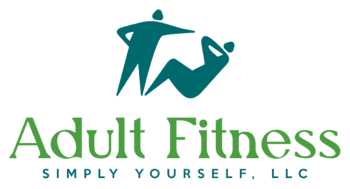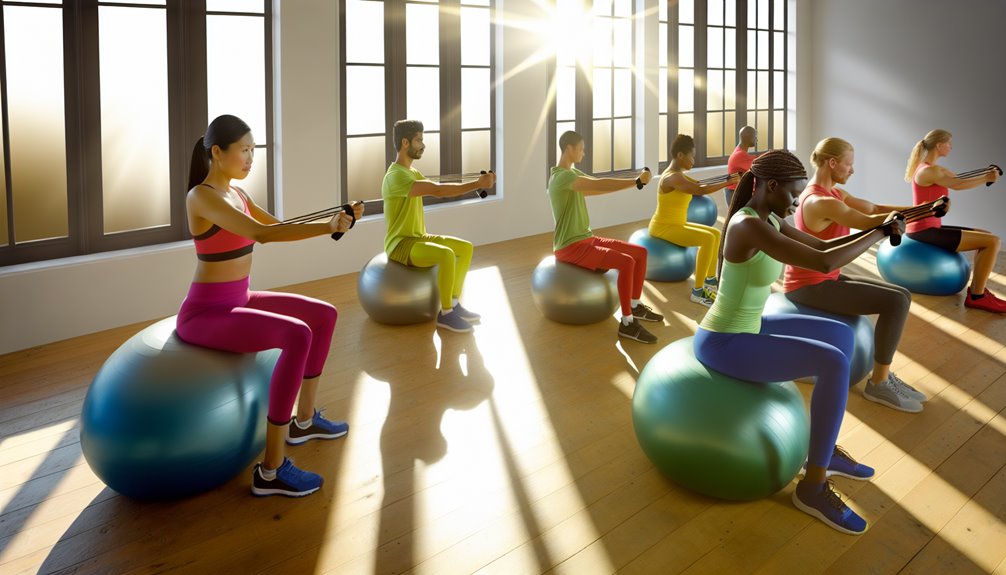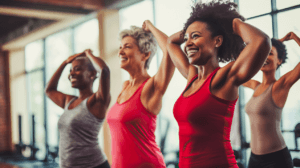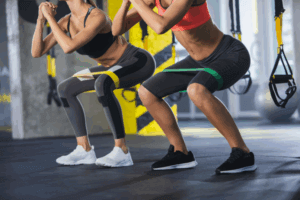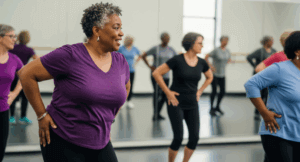Have you considered how seated strength exercises can enhance your joint stability? These workouts not only target essential muscle groups but also help prevent injuries and improve your overall functional movement. You might be surprised by how simple changes in your routine can yield significant benefits. Let’s explore the key muscle groups involved and some effective exercises that can easily fit into your daily regimen.
Key Takeaways
- Seated strength exercises enhance joint stability, crucial for preventing injuries during physical activities.
- Engaging core muscles while seated improves balance and supports the spine effectively.
- Exercises like seated leg lifts and dumbbell presses target key muscle groups for overall strength.
- Modifiable seated exercises make them accessible for various fitness levels, promoting inclusivity.
- Maintaining proper form during seated workouts fosters better posture and reduces strain in daily movements.
Benefits of Seated Strength Exercises for Joint Stability
When you engage in seated strength exercises, you’re not just building muscle; you’re also enhancing joint stability. This is vital, especially if you’re looking to support others in their fitness journeys.
By stabilizing joints, you reduce the risk of injuries, ensuring you can continue helping those around you. Seated exercises allow you to focus on form and alignment, which is crucial for maintaining balance and control.
Additionally, they can be modified to suit various fitness levels, making them accessible for everyone you serve. As you strengthen your core and surrounding muscles, you’ll find it easier to perform daily activities, demonstrating the importance of joint stability in everyday life.
Your commitment to this practice can inspire others to prioritize their health, too.
Key Muscle Groups Targeted by Seated Exercises
Seated exercises primarily target key muscle groups that are essential for overall strength and stability.
You’ll focus on your core, which helps maintain balance and supports your spine. Your upper body, including the shoulders, chest, and back, plays a crucial role in functional movements as well.
Don’t forget about your lower body; seated exercises engage the hips, thighs, and calves, ensuring you develop strength to support walking and standing.
By strengthening these muscle groups, you’re not just enhancing your own stability but also equipping yourself to aid others effectively.
When you serve those around you, a strong foundation allows you to lift, support, and assist them with greater confidence and safety.
Embrace these exercises for better overall well-being!
Effective Seated Strength Exercises to Incorporate
Building on the strength of key muscle groups, incorporating effective seated strength exercises can further enhance your fitness routine.
Start with seated leg lifts to strengthen your quadriceps and hamstrings. Next, try seated dumbbell presses for shoulder stability and strength.
Seated rows can target your upper back, promoting better posture and reducing strain during daily activities. Incorporating seated heel raises will work on your calves, contributing to overall lower body strength.
Lastly, don’t forget seated side leg raises to engage your hip abductors, which are vital for balance.
Tips for Safely Performing Seated Strength Exercises
To ensure a safe and effective workout, it’s crucial to pay attention to your form while performing seated strength exercises.
Start by selecting a sturdy chair that provides good support. Keep your feet flat on the ground and your back straight against the chair. Engage your core to stabilize your body and prevent strain.
When lifting weights, choose a manageable load to avoid injury and maintain control throughout each movement. Remember to breathe steadily, exhaling during exertion.
Always listen to your body; if something feels off, stop and reassess. Lastly, consider working with a partner or trainer who can provide guidance and support.
